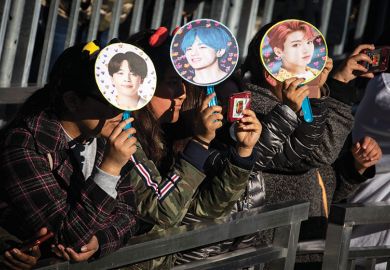Considering its size and influence, there is a staggering amount of ignorance about South Asian cinema. Now slowly we are beginning to see a trickle of good books which help to relieve the situation. Pakistan cinema has been well served by this comprehensive book by Mushtaq Gazdar. His is a descriptive but thorough record of Pakistan cinema over the past 50 years. A most welcome feature is an extensive filmography of every film produced over this period, which takes up the last 100-plus pages.
In the course of these 50 years Pakistan has developed its own film industry. From nothing at the outset in 1947, 40 films a year were produced by the late 1950s, which rose to a peak of 120 by the late 1960s, and now stands at an average of 80 a year. Urdu is the main language but there are also films in Panjabi, Sindhi, Pushto and a few made in Bengali before the break-up of Pakistan in 1971.
The film industry of Pakistan operates under a dual disadvantage. Before the Partition there were multiple centres of Hindi film making in India, Lahore being one of them. But by the time of Partition, concentration had taken place in Bombay where all the stars and the producers and all the money gathered. With the Partition, few of the Muslim stars and producers of Bombay were willing to go across. Some, not so much front rank, did, but often came back. Over the 1950s a fitful traffic continued back and forth.
The one great star who did go, and was the catalyst for the Pakistan industry, was Noor Jahan, an actress as well as a singer. Indeed she was the queen of song: mallika-e-tarannum. On a rare return to Bombay for the golden anniversary of Indian talkies, her reception was rapturous. She was sorely missed in India though she created the Pakistan film industry.
Pakistan and India soon quarrelled and the trade between the two countries as well as human traffic became impossible. Lacking competition and under state protection, the Pakistan film industry became a pale imitation of Bollywood but without the innovative elements of the small art film sector in India, thanks to Satyajit Ray and others. Even the large and stable studios like RK in India are lacking. In India the sheer size somehow helps the industry escape the worst clutches of politicians. In Pakistan the government exploits the industry for its purposes and starves it of regular finance much as in India. But unlike India there have been no stars turned politicians.
This book brings out, through its straight narrative of the films made and the people who made them, the problems facing the Pakistan film industry. In these post-nuclear days co-operation between India and Pakistan is even more unlikely but they could start with larger trade in films and greater flexibility for artists to work on either side of the border. There is a lot of talent on both sides yet to make a globally dominant industry.
Lord Desai is writing a book on Dilip Kumar.
Pakistan Cinema 1947-1997
Author - Mushtaq Gazdar
ISBN - 0 19 577817 0
Publisher - Oxford University Press
Price - £9.99
Pages - 356
